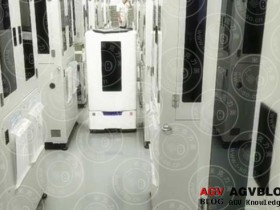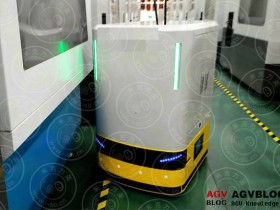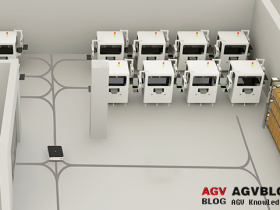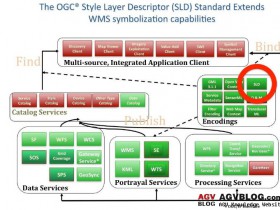Laser guided AGV system
1 Introduction
The development of AGV has experienced more than 40 years of history. Before the mid-1980s, most AGVs were dominated by fixed wire guidance, which made many users have to abandon the original routing system and re-arrange the new routing system when they needed to reorganize their production structure and layout. In addition, the flexibility and adaptability of wire guidance in path planning and traffic management are far from meeting the requirements of the actual production environment. With the rapid development of modern industry, the continuous emergence of high and new technologies has injected new vitality into the AGV industry. As an ideal tool for flexible transportation and a typical representative of unmanned production, AGV has been paid more and more attention and popularized and applied. The research continues to deepen and the field continues to expand. Laser guidance technology is the product of this development.
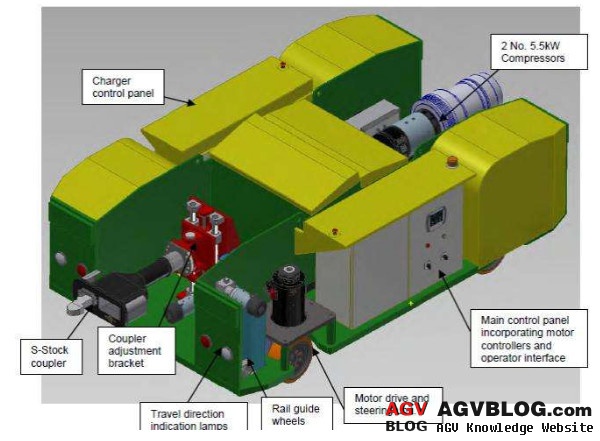 Laser guidance technology is a technology developed by Swedish NDC company in the early 1990s. Due to its advanced indicators and performance, outstanding flexibility and adaptability, complete functional guarantee and technical support, it has been accepted by many AGV manufacturers in the world. So far, nearly one thousand laser guided vehicles with hundreds of AGV systems have been put into commercial operation. The application field involves many industries such as automobile, electronics, paper making, medicine, tobacco, metallurgy and so on. Novel ideas, advanced technology, scientific methods, excellent performance and perfect functions are the basic conditions for laying its leading position in the field of AGV.
Laser guidance technology is a technology developed by Swedish NDC company in the early 1990s. Due to its advanced indicators and performance, outstanding flexibility and adaptability, complete functional guarantee and technical support, it has been accepted by many AGV manufacturers in the world. So far, nearly one thousand laser guided vehicles with hundreds of AGV systems have been put into commercial operation. The application field involves many industries such as automobile, electronics, paper making, medicine, tobacco, metallurgy and so on. Novel ideas, advanced technology, scientific methods, excellent performance and perfect functions are the basic conditions for laying its leading position in the field of AGV.
2 Working principle
Within its operating area, the AGV provides a communication area and a non-communication area. In the communication area, AGV communicates with the system control computer through its on-board communication device, reports its position and status, and accepts work instructions. In the non-communication area, the AGV travels independently according to the predetermined program in the car controller, without contact with the system control computer.
Its working process is: After receiving the cargo handling instruction, the trolley controller calculates and analyzes the stored operating map and the current position and driving direction of the AGV, selects the best driving route, and automatically controls the AGV driving through the drive amplifier And the steering, after reaching the target point of loading the cargo and accurately stopping, the transfer mechanism moves to complete the loading process. Then the AGV starts, drives to the target unloading point, and after the exact stop, the transfer mechanism moves to complete the unloading process and reports its position and status to the control computer. Following this, the AGV starts and drives to the standby area. After receiving the new order, make the next move.
During the AGV driving process, the laser scanning head on the vehicle continuously scans the surrounding environment. When it scans the reflective plate set vertically around the driving path, it "sees" the "road sign". As long as three or more reflectors are scanned, the current X, AG, and X coordinates of the AGV in the global coordinate system can be calculated by the positioning computer based on their coordinate values and the azimuth of each reflector relative to the longitudinal axis of the car body. The Y coordinate, and the angle between the current driving direction and the X axis of the coordinate system, to achieve accurate positioning and orientation.
3 System functions
3.1 Dispatch management
3.1.1 Task management: The tasks assigned by the upper-level scheduling computer are scheduled according to time sequence and task priority.
3.1.2 Vehicle management: According to the position and status of the AGV at that time, select the idle car closest to the target point (including the weighted value calculation results of each road section) to perform the task.
3.1.3 Traffic management: All AGVs within the jurisdiction can be effectively controlled and managed. The AGV strictly follows the planned path, driving and operating independently of each other, and can give each other cars.
3.2 Communication transmission
3.2.1 Keep in touch with the upper scheduling computer through the network, accept task scheduling, and report the execution results.
3.2.2 Maintain communication with each AGV by radio to direct vehicle operations.
3.2.3 Directly modify or update the control program of each AGV through radio communication.
3.2.4 With remote network communication transmission function.
3.3 Control management
3.3.1 Check the process of vehicle executing commands.
3.3.2 Query vehicle status.
3.3.3 Query vehicle traffic management information, occupancy information of each point and segment.
3.3.4 Query data acquisition system signals.
3.3.5 Query the data of global parameters.
3.3.6 Unblock the vehicle and query the occupancy information of each point.
3.3.7 Query the logical connection of the path (through weight detection between points), display, clear, and reinstall the parameter table.
3.3.8 Check the radio communication status.
3.3.9 Query the network connection with the upper dispatch computer.
3.3.10 Query the stop information of the vehicle halfway.
3.4 Graphic monitoring
3.4.1 Display the system-wide path map, including various points and road sections.
3.4.2 Display the position and status of each AGV within the system. Commonly used states are: normal state, waiting for charging, manual state, emergency stop state, path obstruction, car loss, car stop, obstacle obstruction, etc. Display occupation information of each operating point and charging point.
3.4.3 Users or user groups with different operation rights for graphic monitoring can be established.
3.4.4 Reports such as event logs can be generated.
3.4.5 The monitoring graphics can be scaled according to the definition, and the layer can be closed as required.
3.4.6 The information can be displayed by defining the vehicle status.
3.4.7 View and set the status of inputs and outputs.
3.4.8 View the command list in the command buffer to understand the specific loading and unloading location of AGV. The command list will be continuously updated according to the received status information, and a certain command can be deleted or local parameters can be changed.
3.4.9 View the PLC status of the vehicle, track the designated vehicle, cancel the vehicles that are not in the system, and release the blockage between the vehicles.
3.4.10 The system has an event management function. It can report unexpected events, including AGV waiting for charging time too long; vehicle blocking time too long; lost navigation time too long; task cancelled; invalid or wrong loading station number You can use the event filter to display only the types of events you want to query or events that occurred within a time period.
3.4.11 Tasks can be directly delivered in graphical monitoring (for emergency use).
3.5 Mode selection
3.5.1 Various management modes can be set according to the actual needs of production. Such as centralized out of storage, centralized return to storage, normal work and rest. Different modes have different priority scheduling functions.
3.5.2 Different priorities can be set according to production conditions and AGV characteristics. Such as charging priority, time sequence priority, distance priority, variety priority, etc.
3.6 Changing the path and setting can quickly change the running path and setting according to user requirements, including path and point coordinate movement, modification, addition and deletion, and modification of definition content.
3.7 Charging control
3.7.1 AGV has intelligent control charging function. When the battery capacity of the car reaches a certain value, it will automatically send a request message. The system will immediately arrange to charge the charging station. And follow the principle of task priority before completing work tasks. If there is no idle charging station, it will wait in line and the vehicle will not accept new tasks.
3.7.2 The system can timely update the charging information through the signal, and can control the AGV to stop at the designated charging station, and trigger the charging before the pull-in isolation. After the charging is completed, direct the car to disconnect the isolating switch and start working. The entire process is fully automated.
4 Outstanding features
4.1 Advanced
Using laser scanner for positioning, the accuracy is very high, generally ≤ ± 5mm;
In terms of layout description, computer support is higher;
Can communicate with the car continuously (radio or infrared);
With wireless feedback control performance;
Not sensitive to interference (frequency influence, disconnection or loss, etc.);
The car controller adopts a building block structure, all parameters are defined by software, and has powerful PLC support.
4.2 Adaptability
New installations based on existing factory equipment can be synchronized with production;
The reorganization or expansion of equipment has little impact on the shutdown and production;
Does not depend on the floor surface (metal plates, rails, wooden floors, etc.);
Has a more complex operating route;
Except for the reflector, no other auxiliary positioning device is needed;
Can quickly and easily change the running route.
4.3 Economic
No need to dig and bury the line;
No need to invest in the construction of high-frequency power amplifiers;
The reflector has low cost, small size, limited quantity and easy installation.
5 Summary
5.1 The laser-guided AGV system makes full use of the advantages of the laser technology, so that the AGV walking process from the traditional segmentation (usually several meters is a segment) after blind walking to position correction to continuous (50ms / time) calculation, instant correction of coordinate position . Therefore, the positioning accuracy is high and the indicators are advanced.
5.2 The system is powerful, real-time dynamic management and monitoring of AGV, the front desk response is fast and error-free, and the background data is detailed and accurate. Shows the system's careful consideration in management ideas, control methods, field experience, etc.
5.3 In the guidance area, path modification, addition, deletion, re-planning, and definition can be quickly completed on the computer, so that users have no worries in adjusting production equipment, restructuring production structure, technical transformation and updating.
5.4 The flexibility of the laser-guided AGV's path planning is beyond the reach of the traditional AGV, and its advantages are more prominent for narrow aisles, roadways, and criss-cross driving paths.
5.5 The data management of the laser guided AGV system is an important part of the production logistics automation basic information network, which has created favorable conditions for the future development of the information automation management system.

